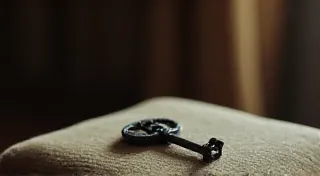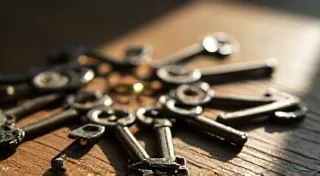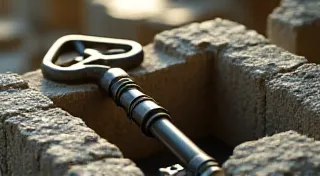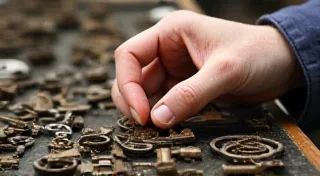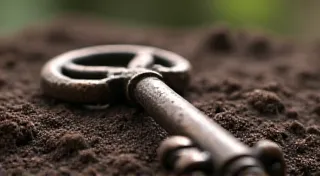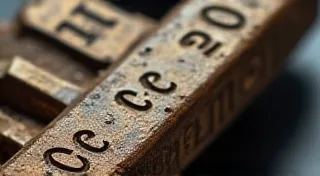Rare and Valuable Antique Keys: Spotting the Treasures
The world of antique key collecting is filled with fascinating history and the potential to uncover real treasures. While most antique keys are charming relics of the past, a select few command significant value. This guide explores the characteristics that distinguish rare and valuable antique keys, delving into their design, historical context, and the factors that influence their worth. Understanding the subtle differences between common and collectible keys can be a rewarding pursuit, and even basic knowledge can transform a casual interest into a genuine passion.
Understanding Key Types and Their Potential Value
Before we dive into the specifics, it’s crucial to understand the basic types of antique keys. Common categories include:
- Mortise Keys: These are often older, used in mortise locks, and can be highly collectible, especially those from prestigious establishments. Identifying the origin of a mortise key is often a key (pun intended!) element in determining its value.
- Skeleton Keys: Known for their distinctive appearance, skeleton keys are popular among collectors, and certain elaborate or intricately designed examples can be valuable. The unique cutting patterns and shapes of these keys often tell a story of the lock they opened.
- Box Keys: Used for strongboxes and similar containers, box keys can vary greatly in design and material, with some achieving collector's interest. Their specialized use often makes them less common than other types.
- Ward Keys: These keys, used in older ward locks, often display unique cutting patterns and can be challenging to identify, adding to their appeal. Pinpointing the specific ward lock system a key belongs to can unlock significant historical context.
- Barrel Keys: Associated with lever tumbler locks, barrel keys represent a more modern era of keys but certain older and uniquely cut examples can still be of interest. While often less valuable than older types, unique barrel keys can still be of interest.
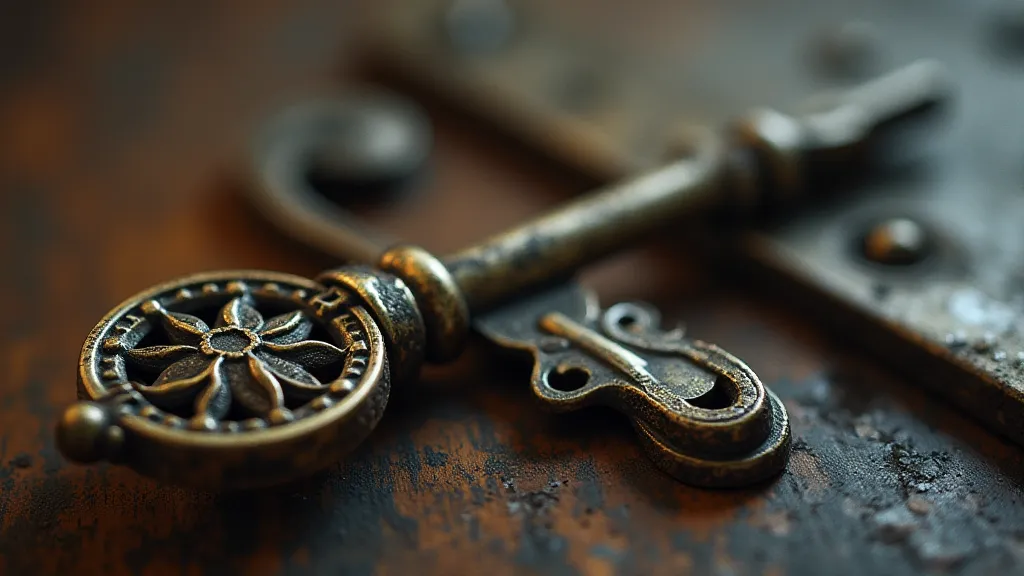
Key Characteristics That Indicate Value
Several characteristics contribute to an antique key’s value. Consider these factors when evaluating your collection:
- Material: Keys made from precious metals like gold or silver are inherently more valuable than those made from brass, iron, or steel. Even bronze keys hold more interest than iron. The metal composition is a fundamental factor in assessing value.
- Design and Ornamentation: Elaborate designs, intricate carvings, and unusual shapes significantly increase a key’s desirability. Keys with crests, monograms, or other personalized markings can be particularly interesting if the associated history can be traced. Deciphering these markings can be like piecing together a family's past.
- Rarity: The scarcer a key is, the more valuable it is likely to be. This can be due to limited production runs, specialized usage, or simply the fact that few examples have survived. Rarity is a critical driver of collectibility across all antique categories.
- Historical Significance: Keys associated with historical figures, significant events, or renowned institutions (e.g., a key from a famous hotel, a castle, or a historic bank) are highly prized. Such keys offer a tangible link to pivotal moments in time.
- Condition: While some signs of age and patina are desirable, keys in excellent condition generally command higher prices. Damage such as breakage or significant corrosion detracts from value. The balance between age and preservation is often key.
- Maker's Marks/Patents: Identifying the manufacturer can provide valuable information about a key’s age and origin, potentially impacting its value. Patents stamped on keys can also indicate rarity. Understanding decoding key markings is an essential skill for any serious collector, allowing you to identify manufacturers and potential origins.
Spotting the Rare Finds
Here are some specific examples of antique keys that often fetch high prices:
- Keys from Historic Hotels/Railroads: Keys from iconic landmarks, especially those with unique designs or personalized markings (like a bellhop's key), can be very valuable. The history embedded within these keys often tells compelling stories.
- Keys from Prominent Families/Estates: Keys bearing family crests or estate markings, particularly those from well-known historical families, can be quite sought after. Tracing the lineage associated with a key can dramatically increase its value and historical significance.
- Keys with Unusual Designs/Cutting Patterns: Keys with intricate ward patterns or unique bow shapes, demonstrating exceptional craftsmanship, are often highly prized. These distinctive features are often testaments to the skill of the original locksmith.
- Keys Associated with Specific Events: Keys linked to historical events like a trade fair or a grand opening can hold sentimental and monetary value. They serve as tangible reminders of significant occasions.
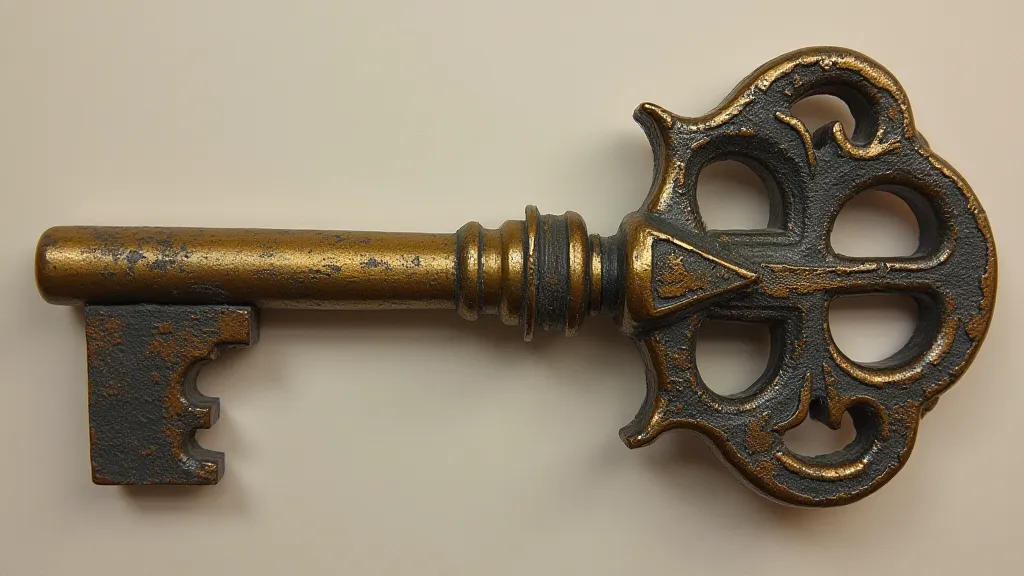
Research and Authentication
Identifying and verifying antique keys requires thorough research. Consult reference books, online forums dedicated to key collecting, and expert advice. Careful examination of a key's design, markings, and characteristics can provide clues to its origin and value. It's not just about identifying the type of lock the key originally opened, but understanding the context – the era, the location, and the people involved. Many collectors find that the story behind a key is often as valuable as the key itself. The cartography of absence – the study of what is *not* present – can be particularly revealing when trying to understand the full history of an antique key.
Important Resources:
- Antique Key Collector's Clubs: Joining a club provides access to expert knowledge and a network of collectors.
- Online Auction Sites: Browsing auction listings can provide a sense of current market values.
- Reference Books and Catalogs: Specialized publications focus on antique keys and their history.
- Online Forums: Dedicated forums allow enthusiasts to share knowledge and insights.
- Museum Collections: Studying keys in museum collections can provide context and inspiration.
Caring for Your Antique Key Collection
Preserving your antique keys is just as important as acquiring them. Proper storage and handling will ensure that your collection remains in excellent condition for generations to come. Avoid storing keys in direct sunlight or humid environments, as these can cause damage. Regularly clean your keys with a soft cloth to remove dust and grime. And always handle your keys with care, avoiding dropping them or subjecting them to unnecessary stress. For more detailed advice, explore caring for your antique key collection and learn invaluable preservation tips.
Where to Buy Antique Keys
The search for the perfect antique key can be an exciting journey, but knowing where to look is essential for success. Antique shops, flea markets, and estate sales are excellent starting points. Online auction sites and specialized dealers offer a wider selection, but it's important to do your research to ensure you're getting a fair price. Consider the reputation of the seller and always ask for detailed photographs and descriptions. Finding reputable sources will greatly increase your chances of acquiring authentic and valuable pieces. You can explore key auctions and online marketplaces to broaden your search.
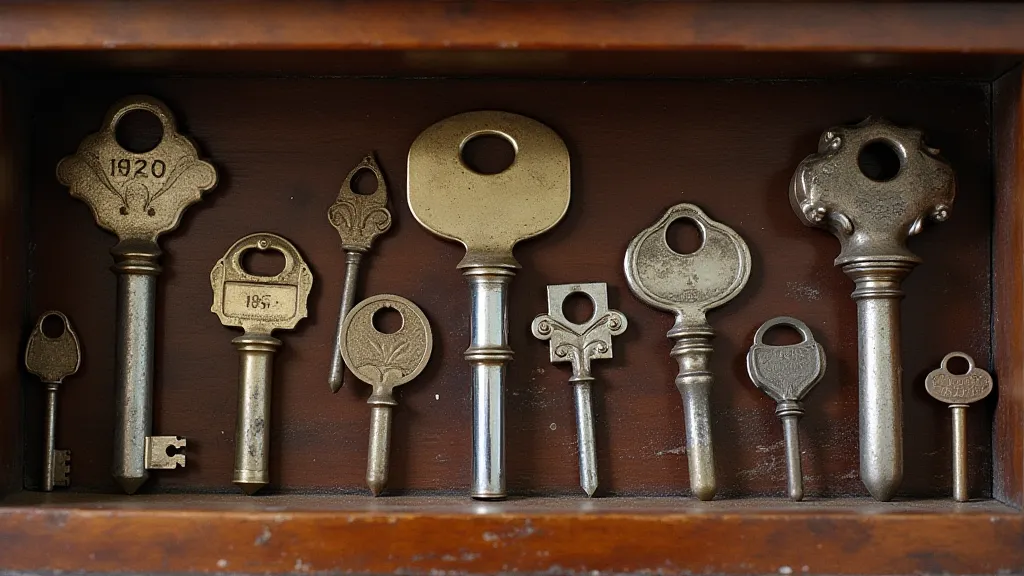
Conclusion
Collecting antique keys is more than just acquiring objects; it's about uncovering pieces of history and appreciating the craftsmanship of a bygone era. By understanding the factors that influence a key’s value and dedicating time to research and identification, you can build a rewarding collection of these fascinating relics. The subtle clues embedded within each key – its material, design, markings – provide a unique window into the past, inviting you to unravel a captivating narrative of innovation, tradition, and human ingenuity.
